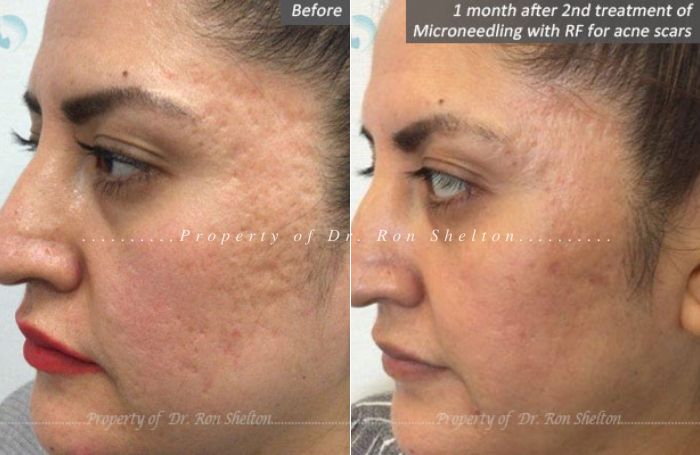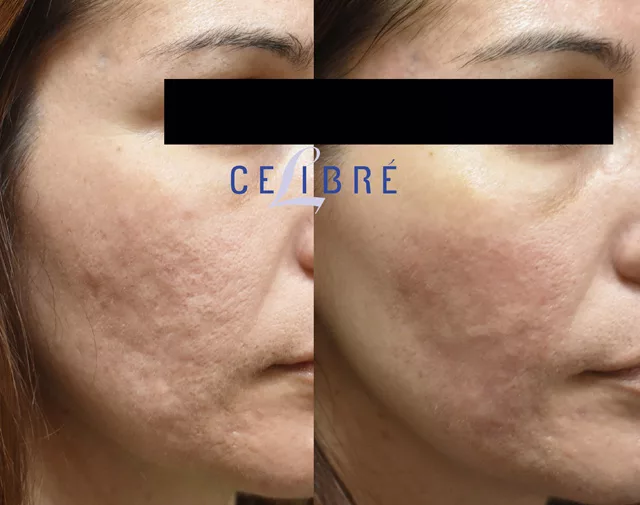The smart Trick of Acne Scars That Nobody is Talking About
The smart Trick of Acne Scars That Nobody is Talking About
Blog Article
All About Acne Scars
Table of ContentsThe Of Acne ScarsAcne Scars for BeginnersThe Greatest Guide To Acne ScarsThe Definitive Guide for Acne ScarsGetting My Acne Scars To Work
Raised acne marks occur when the body produces too much collagen and develop a visible bump. As we age, acne scars become much more significantly because our skin loses collagen. Some individuals are more probable to see marks than others. According to Dr. Garvey, the threat boosts when: An individual has inflammatory acne such as acne cysts.A person delays treatment for inflammatory acne. The longer you wait to seek therapy for acne, the higher the threat of scarring. An individual picks at, presses or stands out acne. When standing out an acne, you push germs deeper right into pore. If we really did not require an additional reason that not to stand out an acne, know that a mark could be the direct result of your activities.
Your genetic make-up plays a big role in how much acne, and what kind of acne you might create. As we claimed previously, there is no magic active ingredient to take acne marks away in the blink of an eye. There are therapies offered that aid reduce the scarring over time.
, a skin specialist may lift the scar, bringing it closer to the surface of the skin to make it less obvious. Resurfacing eliminates layers of the skin, which enables the body to create new skin cells.
The smart Trick of Acne Scars That Nobody is Discussing
best for all kinds of acne scars. Lasers and other light therapies can treat increased marks safely and properly. Therapy with a pulsed dye laser (PDL) can help lower the itch and pain, reduce color, and squash an elevated mark. For people with lighter skin, extreme pulsed light (IPL) likewise may be a therapy option.
No negative events were reported. After 3 needling therapies, there was renovation in the appearance of acne marks in time compared to the control team, with marginal pain reported. Identifier: NCT00974870 Acne scarring has been associated with considerable psychological effects. Treatment of acne scarring remains a therapeutic obstacle, with therapy strategies that include a series of feasible choices.
Nonablative and ablative lasers can be used to either eliminate or perforate skin in a penalty identify pattern, with resulting neocollagenesis; just a fraction of the skin is treated with each treatment, and a collection of treatments are required to deal with the whole afflicted surface area. It has actually been suggested that neocollagenesis and enhancement of acne marks can additionally be achieved making use of needle rollers, which use a mechanical, macroscopic strategy to generate small skin and facial perforations.
Some Known Details About Acne Scars
Like repaint rollers, such gadgets can be returned and forth along the skin. Needling as a feasible therapy for acne scarring was introduced by Camirand and Doucet, who described use of a tattoo gun to abrade acne marks. Fernandes,6 subsequently insisted that needling with a roller led to percutaneous collagen induction.
At each of these brows through, needling was done on the study therapy location, and topical anesthetic was just massaged into the control area. Digital pictures and damaging occasions (eg, infection, prolonged erythema, prolonged edema, serosanguineous water drainage, blood loss, ulcer, erosion, and coloring), including their period, resolution, intensity, partnership to the study procedure, and any medicinal actions taken, were videotaped before each therapy.

Pain degree was tape-recorded based upon a 10-point aesthetic analog scale after the procedure. Quickly after each therapy, gentle hand-operated pressure with gauze was requested 5 minutes to manage identify bleeding and product secretion. The skin was soaked with saline swabs for an hour to assist in hydration while the individuals were informed relating to the demand for home care.
More About Acne Scars
The device was then additional cleaned up by gas sanitation, saved in a shut package, and classified with the participant's name and the initial treatment day on package till the next treatment. This sanitation procedure was complied with to ensure a high level of infection control in try this website this research setup. The main outcome measure was the measurable international scarring grading system, created by Goodman and Baron.
Two blinded skin doctors (S.H. and M.P.) individually rated individuals' acne scars based upon standard electronic photographs acquired at baseline and at the 3-month and 6-month follow-up visits. Required agreement was made use of to integrate ratings. Considered that this was a very early pilot test, we considered it suitable to think about acne scars collectively, not independently, by various morphologic subtypes (eg, rolling, boxcar, ice pick, and more).
and M.P.) did not join randomization or therapy and therefore had the ability to be blinded relating to task. Modifications in mean mark scores from standard to 3 and 6 months, specifically, were computed for the therapy and control arms. Repeated-measures analysis of variation with pairwise comparisons with Sidak modification were done to test whether the scar score differed on therapy kind, time, or the communication in between both.
The Wilcoxon authorized rank examination was utilized to analyze whether the distinction in total acne go to my blog mark appearance was linked with therapy type. Twenty people consented, and 5 dropped out prior to the initial treatment.
Acne Scars - Questions
At 3 months contrasted with baseline, the decrease in mark rating in the needling team was nonsignificant (mean distinction, 2.4, 95% CI, 0.01 to 4.8; P =.052) (Number 3). The needling treatment was not specifically unpleasant. The mean pain score was 1.08 of 10. Discomfort scores boosted a little over time (P =.01), with week 4 discomfort rankings (mean, 1.75; 95% CI, 0.90-2.60) considerably greater than week 2 (mean, 0.78; 95% CI, 0.40-1.20) and week 0 (mean, 0.71; 95% CI, 0.40-1.00).
When asked to estimate the pain experienced throughout and in the days after their treatment, individuals frequently reported no discomfort (acne scars). The majority of participants were that site very completely satisfied with their treatment, replied yes when asked if they would do this procedure once again to deal with additional marks, and stated they would suggest needling to their good friends
Mild short-term erythema and edema, which were not identified as adverse occasions and thus not formally tracked, were routinely observed by the detective (M.A.) and reported by individuals after therapies. This study discloses some renovation in acne marks after a series of 3 treatments of needling. There is a statistically considerable enhancement in such scars in the therapy group from baseline to 6 months and no considerable improvement during this period in the control group.

Report this page